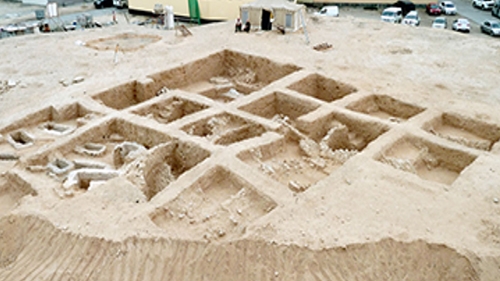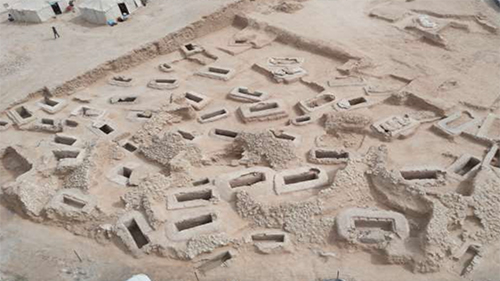Bahrain excavations continue to offer archaeological and anthropological materials and data
TDT | Manama
The Daily Tribune – www.newsofbahrain.com
Staff Reporter
Best efforts are on to uncover the archaeological treasures buried, artefacts that reflect the richness of Bahrain’s civilisational heritage and the prosperity of its people throughout the ages, according to Bahrain Authority for Culture and Antiquities (BACA) officials.
Since 2017, the French Archaeological Mission in Bahrain has been engaged in a research project at Abu Saiba, a major necropolis from the Tylos archaeological period of the island.
The site of Abu Saiba is a hill tomb dating back to the Middle Tylos period (50 BC-150 AD), with a maximum diameter of 70 metres, and a height of 4 to 4.5 metres.
Indeed, since 2017 until today, about a third of the total area of the mound has been uncovered, and 93 burials have been identified.
During this year 2022, 23 new tombs were discovered, while 11 were completely excavated, and out of these 11 burials that were excavated, three were intact, the others were deliberately looted and robbed, most likely in antiquity, though they still yield sometimes interesting archaeological and anthropological materials and data.
Julien Cuny, Head of the French Archaeological Mission Team, earlier asserted that the main goals and objectives of excavation at the Abu Saiba site is to study the material culture of the people of Bahrain during the Tylos period, looking for accurate information on chronology, the different materials and manufacturing process, funerary rituals, and trade relations.
During this year, Julien added, an interesting intact tomb was excavated. The body was laid on its back in a built burial chamber covered with stone slabs.
“The burial chamber was not filled with sediment, as is usually the case when tombs are looted. The skeleton was well preserved and in good conservation conditions. The dead is a male over 50 years old, who was buried with few things: only a bowl placed in his right hand and parts of an animal, possibly a chicken, as an afterlife offering.”
A pair of ancient dice, considered to be the first ever found in the county and probably used for gaming or fortune telling rituals, was also discovered during the excavation at the archaeological site of Abu Saiba.
“Many details are not known about the story of the dice’s origin, but it is considered the first dice discovered in Bahrain. It was part of a game or ritual of fortune-tellers,” Dr Salman Al Mahari, Director of Antiquities and Museums, had told Al Arabiya TV.
“What looks like a hill cemetery was found dating back to the middle Tylos period (50 BC to 150 AD), with a maximum diameter of 70 metres, and a height between 4 and 4.5 metres,” Mr Al Mahari said.
In 2019, the Unesco World Heritage Committee voted to add Bahrain’s Dilmun Burial Mounds to the World Heritage List. The landmark comprises 21 archaeological sites, in the western part of the island. They were built between 2050 BC and 1750 BC.
It provides evidence of the Early Dilmun civilisation, in about the second millennium BC, when Bahrain became a trade hub. Last month, archaeologists discovered a 4,500-year-old highway network in Saudi Arabia lined with well-preserved ancient tombs.
Researchers from the University of Western Australia have carried out a wide-ranging investigation over the past year, involving aerial surveys conducted by helicopter, ground survey and excavation and examination of satellite imagery.
In findings published, the researchers said the “funerary avenues” spanning large distances in the northwestern Arabian counties of Al ‘Ula and Khaybar had received little examination until quite recently.
The site of Abu Saiba is a hill tomb dating back to the Middle Tylos period.
Related Posts


